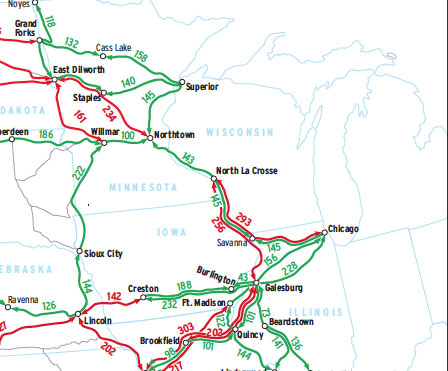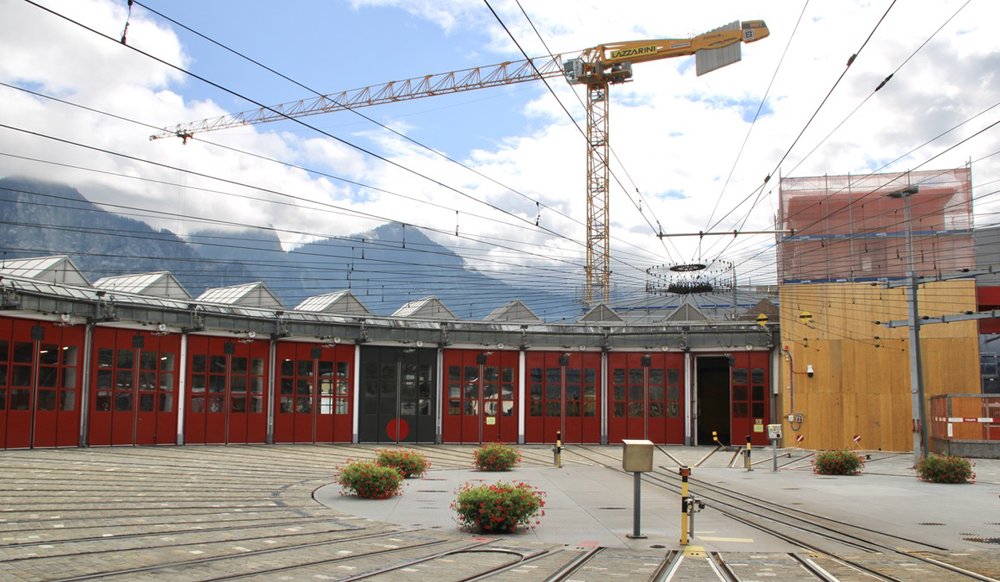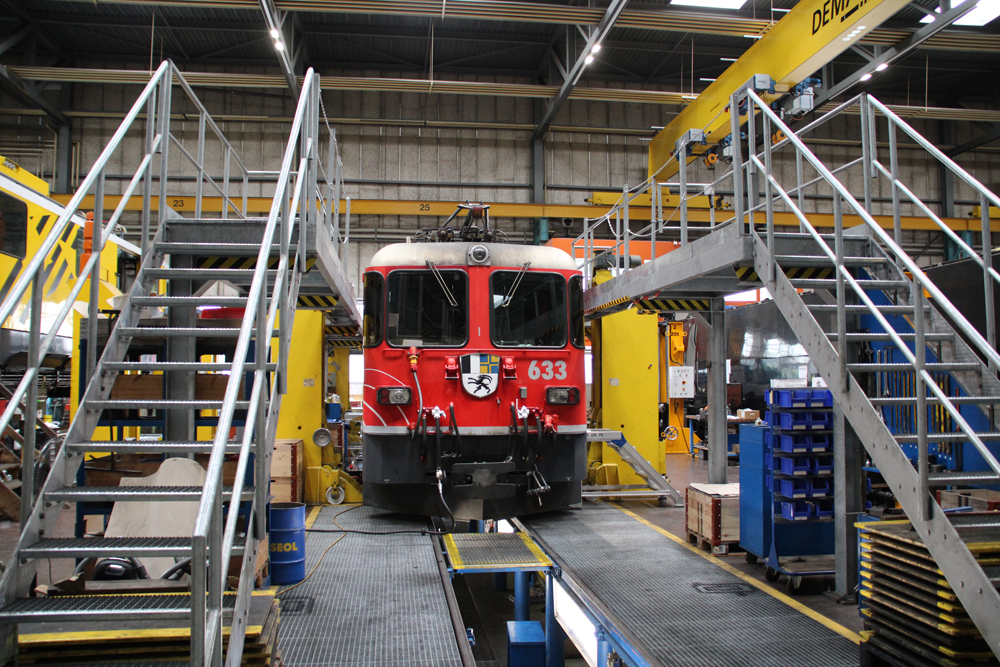This Map of the Month appeared in the May 2004 issue of Trains magazine.
If a system map is an archaeological record of mergers, acquisitions, abandonments, and line sales, then a crew-district map is the record of all of these, plus technological change and traffic pattern change, with a great deal of law and contract negotiations mixed in.
In a perfect world, a crew-district is a day’s work. Ideally, a crew goes on duty, gets its paperwork, gets out of the yard, reaches its destination, and ties up comfortably within the maximum 12 hours on duty allowed by the federal hours-of-service law. If the district is too long tor its conditions of traffic and geography, the crew “hogs out” short of its final terminal, and is “dogged” or “patched” by a relief crew (idiom varies) — two crews have been paid a day’s wages to do what was supposed to be the work of one.
The “home terminal” is the place where the crew normally goes to work; usually, it’s where the crew members live. The “away terminal” is the opposite end of their run, and the crews get their 8-hours rest in a motel provided by the company — that is to say, what’s left of the 8 hours after travel time to and from the motel, a meal, a shower and, of course, the crew-caller can call 6.5 hours after tie-up time. In days past, the away terminal was often a remote hamlet in between two cities. Or even less: As late as the 1990s, there were still a few crew changes in the middle-of-nowhere, consisting of only a few sidings, a crew dormitory, and a 24-hour lunchroom.
As trains have become faster, many intermediate terminals have been dissolved, with the trains running through. Usually, the two crew districts that abutted became one double-ended district. Since crews are usually pooled on a first-in, first-out basis, everyone still has the same opportunity to rack up miles and thus pay.
Crew districts are not static. Since 2001, BNSF has eliminated districts running to Eugene, Ore., Helena, Mont., Quanah, Texas, Mobile, Ala., and International Falls, Minn. All were on lines sold off, embargoed, or substituted with haulage agreements on another railroad. BNSF has added a crew change at Kremmling, Colo., on the former Rio Grande, and abolished the change at Las Vegas, N.M.
Railroads included in this map:
BNSF Railway














